Hello, everyone! Tomorrow, I’m embarking on a big trip that’ll take me to both CubeCon this week and Magic 30 the following one. So, in the spirit of that trip, I’d like to take this week to write a quick primer on my featured cube at CubeCon, the awkwardly-named UMA-Inspired Cube I built earlier this year.
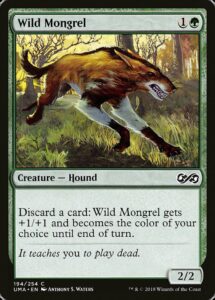
Overview
This cube is inspired by Ultimate Masters, as its name ever so gently suggests. I loved that Limited format and aim to replicate a lot of the feel of that awesome Limited environment in this cube (with a few twists and a somewhat higher power level). It contains 540 cards, which means you’ll see two-thirds of it in an eight person draft and there’s no guarantee any particular card will appear. It does, however, break singleton. That means there are multiple copies of various key cards like Frantic Search, the artifact dual lands from Modern Horizons 2, Spider Spawning, and Fiery Temper (the one card to get three copies).
If you only knew one thing about the UMA-Inspired cube, it would be this. The cube is synergy-driven, built around four pillars: Madness, Artifacts, Spells, and the Graveyard. Each has ample overlap with the others, so you can go deep down one very specific archetype, or blend one or more of them together—but you will have to keep them in mind as they define everything. There is no monored aggro, monogreen ramp, or multicolor goodstuff Planeswalker control deck—every deck will rely on some combination of Spells, Madness, Artifacts, and the graveyard to function. So, let’s talk a little bit about those four pillars.
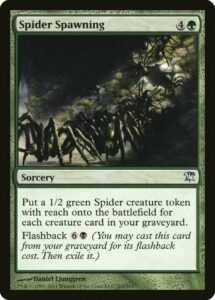
1. The Graveyard
This is the cube’s biggest and most central pillar. The majority of drafters should use the graveyard at least lightly, if not rely on it heavily. By virtue of being the largest macro-archetype, it offers the most directions in which to go.
You can fill your graveyard to power spells like Spider Spawning and Seize the Storm. You can consume your graveyard with effects like Gurmag Angler or Grim Lavamancer. You can generate value through Flashback, recursive spells like Ghoulsteed, recursion engines like Second Sunrise and Scrap Trawler, and reanimation spells like Late to Dinner, Dance of the Manse, and Diregraf Rebirth (just don’t expect to reanimate anything as powerful as an Archon of Cruelty or Griselbrand). You can even use (the small number of) recycling like Junktroller to turn your graveyard into a tutor or the one-of Laboratory Maniac to straight up win the game.
In short, there are plenty of ways to use the graveyard, though every pushes in a slightly different direction:
White generates value through recursion.
Blue fills the graveyard and tends to reward having spells there.
Black does a bit of everything (black is the Jill of all trades of this cube).
Green uses the graveyard more than any color—it fills it, eats it for value, and especially loves having creatures in it.
Red relies on the graveyard the least. It generally wants spells in there or to achieve Delirium.
This general guide hopefully gives you a sense of the cube’s approach to archetypes. There are few strict archetypes where two colors explicitly and exclusively support a theme. Sure, each color has specialties and unique cards, but each color can at least support every major theme.
Finally, let’s briefly talk about graveyard hate. You won’t find anything like Rest in Peace here that would disable entire decks by itself, but there are cards which will disrupt your opponents’ graveyards (some of which double as ways to manipulate your own). You might want to prioritize a card like Scrabbling Claws, Burn Away, or Serene Remembrance much higher than you would normally.
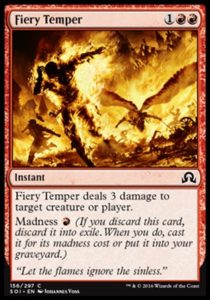
2. Madness
Madness is a sweet, if somewhat awkward mechanic. It generates both card and mana advantage if you can jump through the hoop of combining Madness cards with discard outlets. This cube has plenty of both, so you shouldn’t have too much trouble with that—as long as there’s not too much competition.
That said, four of the five colors have ample support for it, though each pushes in a somewhat different direction:
Blue is great at enabling Madness through looting.
Black is, as it is everyone in the cube, flexible. It can support all other Madness archetypes but doesn’t specialize in any particular strategy.
Red can be spells-focused with blue, aggressive with black, or focus on big creatures with green.
Green is creature-focused. It combines especially well with red.
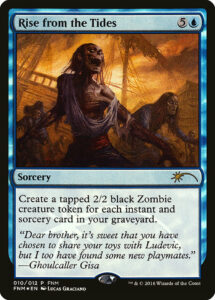 3. Spells
3. Spells
Instants and sorceries-matter is a classic blue-red theme and perhaps unsurprisingly is focused in those colors. It’s the cube’s smallest pillar, though it’s still supported at a much higher volume than mini-archetypes built around specific cards like Dark Depths and Krark-Clan Ironworks. More often than not, Spells will be a Madness deck supported by cards like Monastery Mentor, Thermo-Alchemist, and Codie, Vociferous Codex that don’t care about Madness.
Blue and red are the core Spells colors. They reward you for casting instants and sorceries and filling your graveyard with them.
White and black can play support decently well with engines, spells, and discard outlets, but they need a lot of blue or red cards for this to be more than a Madness deck with a few spells.
Green is the most creature-focused color in the cube and has scant contributions to this deck.
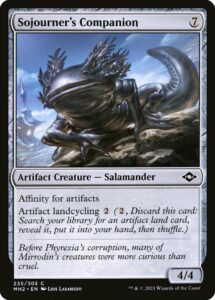
4. Artifacts
Finally, there’s artifacts. This is a staple archetype of Masters sets (Modern Masters 2013, Modern Masters 2015, and Modern Horizons 2 gave it a starring role). It’s also the biggest deviation from Ultimate Masters, which had Heroic as its primary aggressive archetype. I appreciate how much better artifacts synergize with the cube’s themes than Heroic, plus there are far, far more cards to build from rather than the limited pool of good Heroic cards that UMA mostly already covered.
Artifacts can be an aggressive deck built around cheap colorless trinkets and big Affinity creatures like Sojourner’s Companion, but each color can add its own texture:
White is the most artifact-focused color. It can be aggressive (especially when paired with red), value-focused with blue or black, or even be a combo deck with Second Sunrise and Faith’s Reward.
Blue provides powerful engines and finishers to slower artifact-focused decks.
Black is a bit of a wildcard here, as it has a bunch of new Warhammer 40K cards. It can be aggressive or grindy.
Red artifacts are aggro artifacts. You have the most cheap artifacts to enable go-wide and Affinity strategies.
Green doesn’t mess with artifacts much, just as it doesn’t mess with spells.
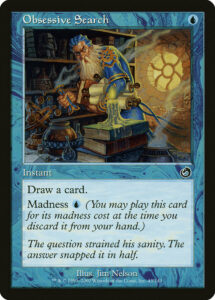
I could go on for hours about my cube, but I feel like the best introduction to a cube is playing with it and we’ve covered all the core points. Here’s hoping at least a couple folks have fun playing it this week in Madison. I’m very much looking forward to seeing what kinds of decklists come out of it, like what proves most popular, whether any one archetype consistently overperforms, and what pain points there (like, is Dark Depths too good or too easy to disrupt?).
But also, I’m not worried about whether it’s perfect—it isn’t, but then again, I don’t believe any cube or any game is. It’s good enough for people to play with and will never be something I’m not compelled to tinker with. That’s always true in game design and one of the many great lessons being a cube owner or enthusiast can teach.
Zachary Barash (he/him) is a New York City-based game designer and the last commissioner of Team Draft League. He designs for Kingdom Death: Monster, has a Game Design MFA from the NYU Game Center, and does freelance game design. When the stars align, he streams Magic (but the stars align way less often than he’d like).

